Scaling Innovation for a Thriving Planet
We welcome new leaders, take the NABIT to the salmon runs of Washington State, and deploy the Sentinel to New Zealand’s epic national parks.
A Letter from Our Founders
📨 Uniting Innovation, Validation, and Collective Action
As 2025 unfolds, the urgency and opportunity for innovation in conservation have never been clearer. Around the world, fires rage, biodiversity declines, and ecosystems face mounting threats. And yet, everywhere we look, bold ideas and technologies are emerging that could redefine what is possible—for nature and for humanity.
At Conservation X Labs, we believe that new tools, new collaborations, and new ways of working together are essential. The reality is that too many promising technologies remain stuck in pilot stages. Scaling conservation innovation—getting game-changing solutions into the hands of every ranger, every community, everywhere—demands a different approach: one that unites invention, validation, and collective action.
This is why we are so excited to share highlights from the field, from the announcement of Technical Semi-Finalists in our Fire Grand Challenge to the real-world testing of our NABIT Chinook Salmon eDNA kit across Washington State. It’s why we led critical conversations at the Nature Tech Collective’s Unconference about how to build shared platforms and independent validation pathways that can accelerate innovation at scale. And it’s why we just released Gold Reimagined, a new report mapping how open innovation can help transform one of the most environmentally destructive industries on the planet.
We are also thrilled to welcome Dr. Eric Dinerstein as CXL’s Chief Scientist and Senior Conservation Counsel, and Dr. Daphne Carlson as the Managing Director of NABIT and Chief Conservation Officer. Eric’s leadership and vision have long shaped conservation, from his work pioneering ecoregions, creating technology solutions, advancing science-driven policy, and restoring wild nature across the globe. Daphne brings to CXL a rare blend of strategic leadership, scientific rigor, and global experience—uniting evidence-based conservation, planetary health, and systems thinking to drive impact at scale. Their arrival, just one year after our merger with Wild Me, signals the next chapter of growth for CXL as a home for conservation scientists, technologists, innovators, and bold ideas.
At a time when the challenges we face are immense, we know that no one organization can succeed alone. We must lean on each other. We must rethink how we collaborate, how we share platforms, and how we move beyond incremental change. Together, we can unlock the full power of technology and human ingenuity to create a thriving planet for future generations.
Thank you for standing with us as we continue to dare mighty things.
🧑🏽🚒 The Fire Grand Challenge: Western North America Names Twelve Finalists
Conservation X Labs has announced twelve finalist teams in the Fire Grand Challenge, selected from over 140 global applicants for their bold, scalable solutions to wildfire. Finalists each receive $50,000 and will enter a nine-month program to accelerate, test, and scale their innovations in partnership with local communities across North America. From robotic insulation systems to AI-powered reforestation and Indigenous-led fire stewardship, these teams are tackling the wildfire crisis with cutting-edge technology and deep local knowledge. Final awards of $200,000 will be announced in early 2026. Read more.
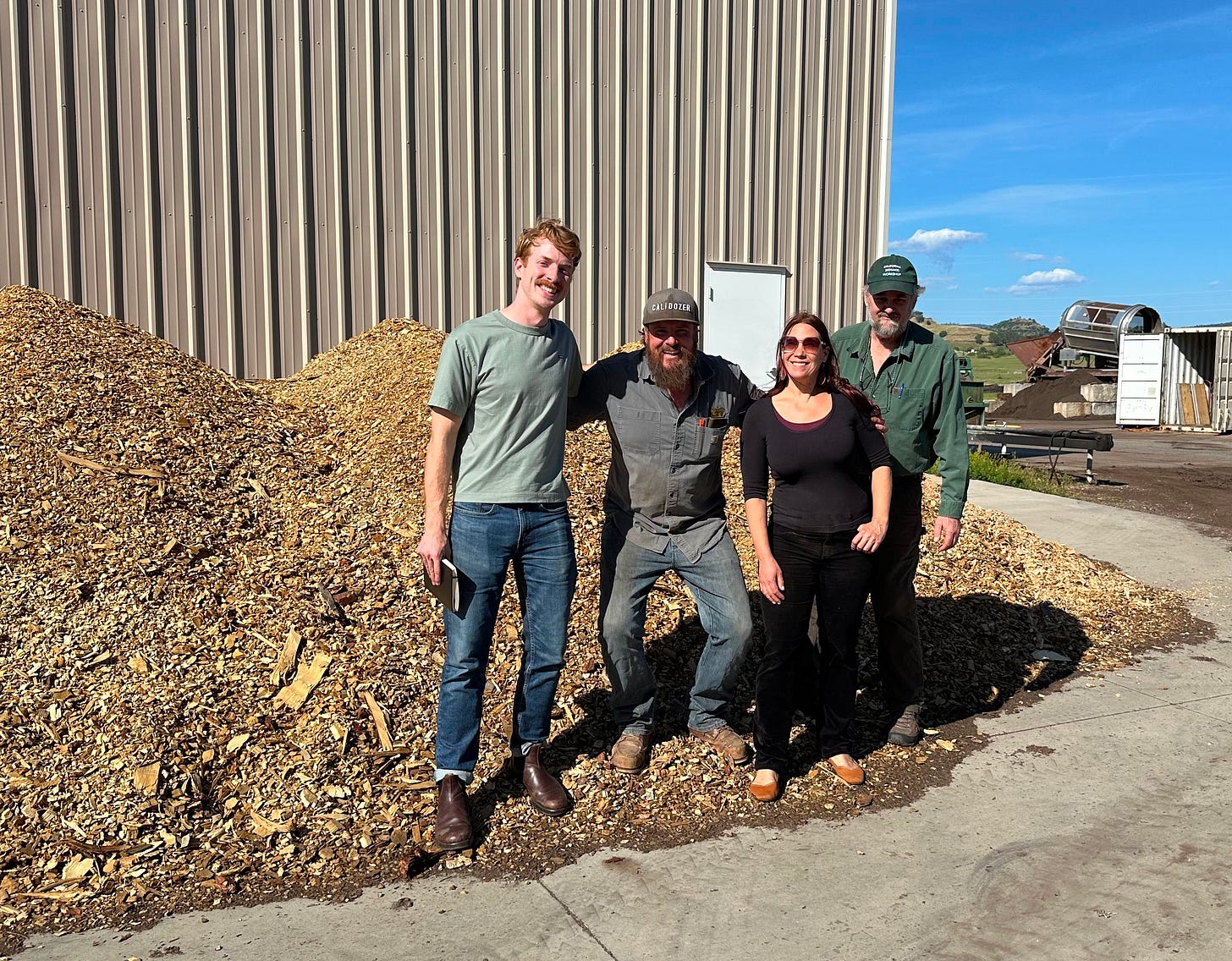
🐟 NABIT Chinook Salmon Kit Begins Field Testing Run
In April, the NABIT team went into the field weekly to evaluate the Chinook salmon eDNA test kit, visiting streams, rivers, and hatcheries across Washington State—each home to Chinook populations—to put the test through real-world conditions. These trials are helping to unlock new use cases across ecosystems and watersheds, expanding NABIT’s impact and supporting the conservation of this keystone species. Faster, non-invasive monitoring is here—and we're just getting started. Stay tuned for updates as we take this next big step for salmon conservation!
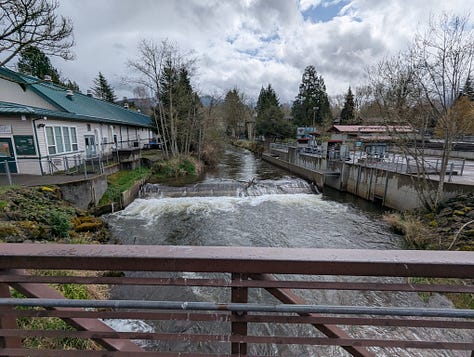
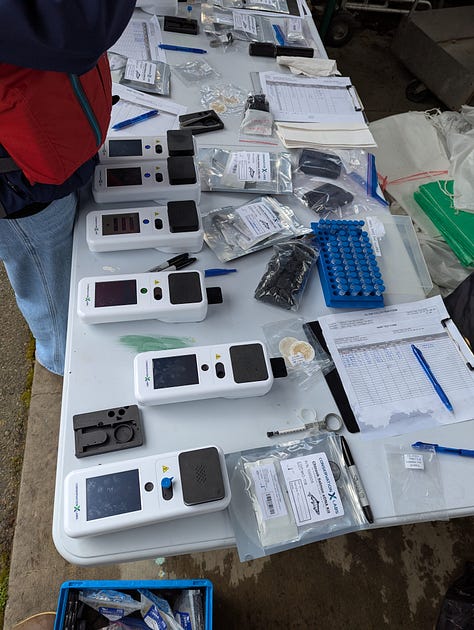
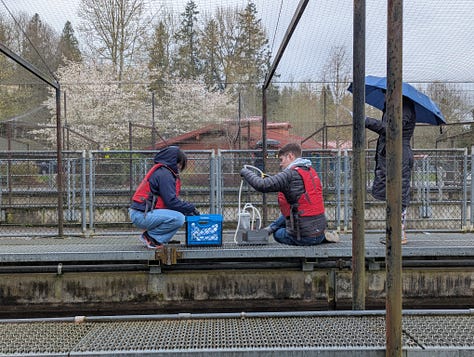
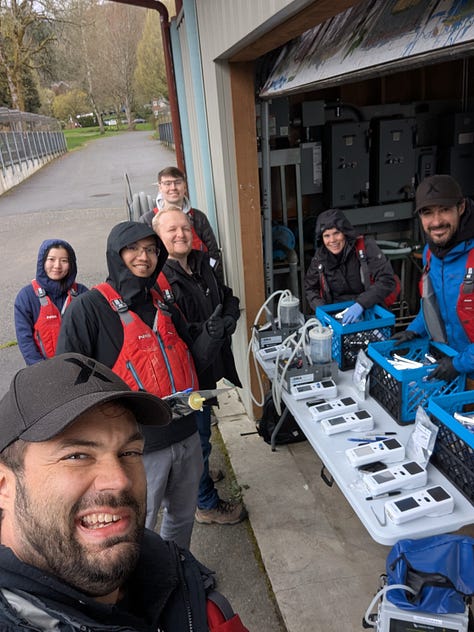
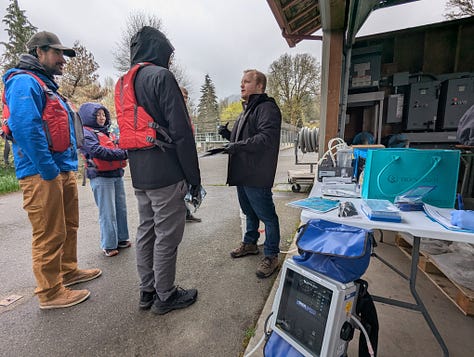
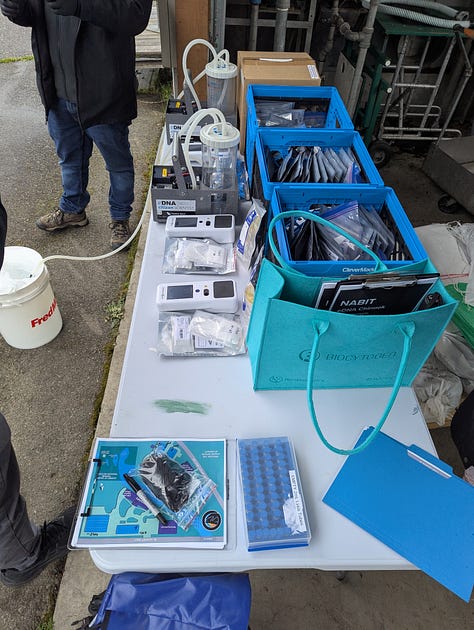
🇳🇿 Sentinel Powers Real-Time Invasive Species Detection in NZ
New Zealand’s offshore islands are vital havens for biodiversity—but invasive mammals like rats continue to pose a serious threat. Now, rangers are using Conservation X Labs’ Sentinel system to detect incursions in near real-time, preventing invasive species from establishing breeding populations. Piloted on Ulva and Pomona Islands, Sentinel’s AI analyzed over 27,000 images to detect eight rodent events, enabling faster, more targeted response. This tech drastically reduces ranger workload and supports New Zealand’s ambitious Predator Free 2050 goal—offering a glimpse of what’s possible when AI meets boots-on-the-ground conservation.
🦈 CXL to Host Wildlife Trafficking Enforcement App: Fin Finder
The Wild Me Lab is the new home of the Fin Finder mobile app, which helps prevent wildlife trafficking by allowing customs agents to determine the species of shark fins in transit and make enforcement decisions. Wild Me developed the original AI models for the project and is now pleased to partner with NParks Singapore and others to support its adoption and growth.
📈 We Welcome Two New Leaders
Dr. Daphne Carlson joins CXL as the Managing Director of NABIT, Chief Conservation Officer.
Dr. Carlson is a veterinarian and epidemiologist with over 20 years of experience leading multidisciplinary teams across the federal government, academia, and the private sector. Before joining CXL, she led the Division of International Conservation at the U.S. Fish and Wildlife Service, where she managed over $100 million in financial assistance for global species and landscape conservation. During her tenure, Daphne championed the integration of evidence into conservation practices, positioning the program as a Conservation Evidence Champion. Prior to her federal service, Daphne implemented global health programs in multiple countries and conducted research on zoonotic diseases.
Dr. Eric Dinerstein joins CXL as Chief Scientist, Senior Conservation Counsel.
Dr. Dinerstein is a globally recognized conservation biologist with decades of experience as a field researcher, strategist, and tech innovator. He served as Chief Scientist at WWF for 25 years, led RESOLVE’s Biodiversity and Wildlife Solutions program, and founded Nightjar, creator of the award-winning TrailGuard AI. Eric pioneered the concept of ecoregions and recently led the landmark Conservation Imperatives analysis. A leading voice for science-driven policy, he continues to shape global conservation through groundbreaking research and partnerships that restore wild nature and advance human-wildlife coexistence.
🌍 Co-Founders Drive Global Thought Leadership in the US and Europe
The Villars Institute
In April, co-founders Alex Dehgan and Paul Bunje traveled to the Villars Institute Convening, an intimate, high-level gathering often described as a “Davos for Nature.” Organized by the former head of the World Economic Forum’s annual meetings, Villars brings together global leaders, scientists, innovators, and changemakers to shape solutions at the intersection of nature, climate, and the future of our planet. CXL was invited to participate due to winning the Biodiversity Challenge of the World Economic Forum’s Uplink Accelerator. Alex spoke at multiple events, including through keynotes and panels on technology to address wildlife crime, restoration technology, and technology to facilitate natural capital.
Nature High
Alex was also invited to join NatureHigh—a high-level gathering of just 15 global leaders in climate and conservation, including CEOs, foundation heads, researchers, and corporate executives, intended to push the participants beyond their mental and physical boundaries. Organized by renowned climate scientist Johan Rockström, the convening took place in the awe-inspiring glacial landscape of the Swiss Alps and facilitated strategic discussions across sectors, disciplines, and borders on how to protect nature at scale.
Ocean Visions Biennial Summit
In March, Paul participated in the Ocean Visions Biennial Summit 2025, a global convening of scientists, policymakers, innovators, and funders working at the forefront of ocean-climate solutions. Held in Vancouver, British Columbia, the summit focused on advancing action-oriented strategies to restore ocean health and stabilize the climate. Attendees explored breakthrough technologies, nature-based interventions, and cross-sector partnerships aimed at tackling the planet’s most urgent environmental challenges from an ocean-first perspective.
The Nature Tech Collective “Unconference”
At the Unconference, Paul led two energizing sessions focused on one big question: how do we scale the innovations that can actually save biodiversity? The first explored the Extinction Solutions Index (ESI)—our Project Drawdown-inspired framework for identifying and prioritizing high-impact interventions. In the second, co-led with Conservation International, participants tackled the “pilot trap” stalling nature tech and began mapping out a “Consumer Reports for Nature Tech” to accelerate adoption.
CXL Research Updates
📄 Papers authored by CXL team members:
Gold prices have surged to record highs, intensifying artisanal and small-scale gold mining (ASGM), which now produces nearly a quarter of the world’s gold—but also drives mercury pollution and ecosystem loss in biodiversity hotspots. To address these impacts, the Artisanal Mining Grand Challenges (2019–2022) awarded $1.75M to innovators developing solutions ranging from satellite systems tracking illegal mining to copper plates capturing mercury waste. Our new report, Gold Reimagined, authored by Daphne Yin, Carmen Zárate, Marion Adeney, Chad Gallinat, Rocío Barrionuevo, and Luis E. Fernandez (CINCIA), evaluates these efforts and offers a roadmap for scaling impact, closing innovation gaps, and strengthening the ASGM ecosystem. With continued collaboration and investment, we can transform gold mining into a force for environmental stewardship and sustainable livelihoods. Download the report in English here, or the Executive Summary in Spanish here.
🐾 Research based on Wild Me’s Wildbook data:
Tustison, C., Stiller, J., Mills, K., Martin-Smith, K., Booth, D., Rouse, G., Pollom, R. & Wilson, N. 2025. e.T17177A263199517.
Ingo Miller, Richard Fitzpatrick, Kátya Gisela Abrantes, et al. Authorea (preprint). April 04, 2025.
Identifying a high-use hawksbill turtle habitat in the central Saudi Arabian Red Sea using photo-ID.
Tanabe LK, Cochran JEM, Hardenstine RS, Scott K and Berumen ML (2025). Front. Amphib. Reptile Sci. 3:1540089.
Pairwise Matching of Intermediate Representations for Fine-grained Explainability.
Shrack L, Haucke T, Salaün A, Subramonian A, and Beery S (2025). arXiv.
Argeswara, J.K.P., Venables, S.K., Germanov, E.S. et al. Environ Biol Fish (2025).
Occurrence of mobulid rays in Northwest Madagascar.
Diamant, S., Bosio, C., Rambahiniarison, J. et al. Environ Biol Fish (2025)
Spotlight on Impact in the Field
🐉 Wild Me Drives IUCN Red List Status Change for Seadragons
The Wild Me Lab is a member of the SeadragonSearch multi-institution research team, which uses Wildbook to track individual seadragons and estimate their population dynamics. SeadragonSearch members using Wildbook recently published a revised Red List Assessment resulting in a change of status to 'Vulnerable.' Read more at iucnredlist.org.
Join us in fueling bold solutions to today’s most urgent conservation challenges. Your donation today helps spark innovation, scale transformative ideas, and empower the communities on the frontlines—from wildfire resilience to wildlife protection. To explore other ways to partner, contact heidi@conservationxlabs.org




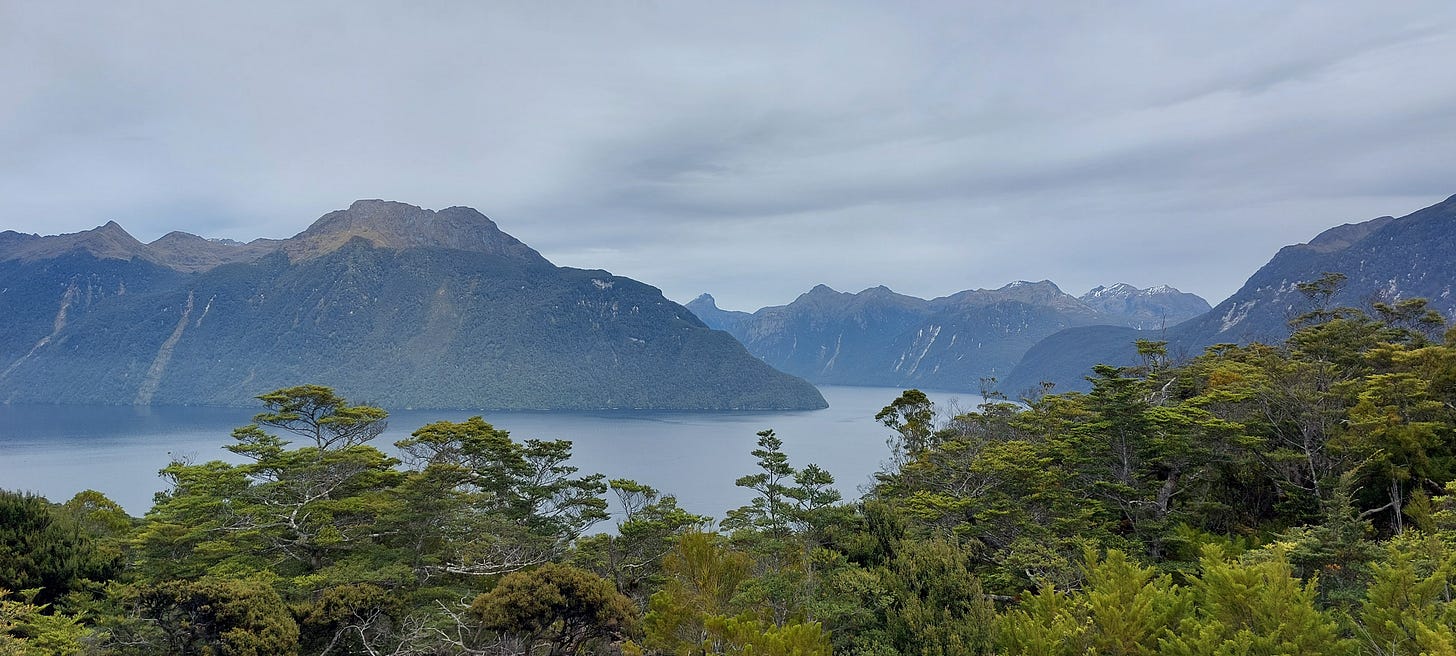



This work sounds amazing! It’s so nice to see others out there trying to apply technology and innovation to conservation!